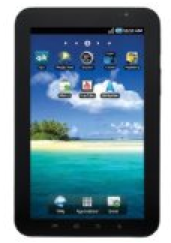

When I heard this sad story on NPR radio this morning it moved me so much and reminded me of Doug Roberts novel, The Man Who Fooled SAVAK, a suspenseful love story based on true events. This is the kind of repression that still pervades a lot of the Middle East today as it did forty years ago when Mr. Roberts staged the successful escape of his fiancé and her mother from a repressive and threatening Iran.
In January of this year in Pakistan, the governor of Punjab province, Salmaan Taseer, who was an outspoken defender of civil rights, was gunned down for criticizing the hardness of Islamic law. He was merely sticking up for a Christian woman who was accused of blaspheming Islam. Her punishment: death.
His daughter, Shehrbano Taseer, is a journalist in Pakistan, and she talks to Steve Inskeep, host of NRP Radio’s Morning Edition, about her father’s legacy and her own fight against extremism.
Here is part of that interview:
“INSKEEP: And it was not that your father committed this alleged act of blasphemy, but merely spoke up for the rights of someone who was accused of blasphemy and asked for her to be accorded mercy. This is what many clerics described as itself being blasphemous.
Ms. TASEER: Yeah, because my father had criticized the law. He had criticized the misuse of the law.
INSKEEP: Did anyone speak up for your father after his murder?
Ms. TASEER: There were three people who believed that this law was being misused and that this was an unfair  allegation of blasphemy. There was my father. There was our federal minister for minorities, Shahbaz Bhatti, and there was Syeda Imam, who is a parliamentarian. And she had tabled a bill in the national assembly trying to water down this law and stop the misuse. And two out of three of these people are now dead. Shahbaz Bhatti, our federal minister for minorities, was gunned down outside his mother’s home two months after my father was shot dead.”
allegation of blasphemy. There was my father. There was our federal minister for minorities, Shahbaz Bhatti, and there was Syeda Imam, who is a parliamentarian. And she had tabled a bill in the national assembly trying to water down this law and stop the misuse. And two out of three of these people are now dead. Shahbaz Bhatti, our federal minister for minorities, was gunned down outside his mother’s home two months after my father was shot dead.”
You can read the rest of this moving interview or listen to it on the NPR site. And if you want to read more about a similar story with a much different outcome, download a copy of The Man Who Fooled SAVAK, available on the Kindle, Barnes and Noble NOOK, Apple iBooks and in various ereader formats from Smashwords.
With all the buzz around the iPad, you don’t need to be psychic to predict that Amazon would sooner or later develop a comparable color screen tablet device.

Well the sooner is here. Amazon is now accepting iPads and other devices as trade-ins for their new touch-screen color tablet at http://amzn.to/jbdaq2
Steve Windwalker reported in the blog Kindle Nation Daily that Amazon is well on the way to preparing to launch the device sometime this summer. Here’s what he wrote about the trade-in program.
“It extended its relatively unknown Buyback program, previously associated mostly with textbooks, movies, and video games, to include a wide range of electronics products including the iPad, the iPhone, the Samsung Galaxy, the Motorola Xoom, and all kinds of other devices that might — if you could trade them in for a decent sum — prepare the way for you to buy a Kindle tablet, both in terms of the need to replace functionality and the financial wherewithal to make the purchase.”
They actually want you to own their new Kindle Color version knowing full well that owners of iPads and other color tablet like devices wouldn’t buy the new Kindle after shelling out $500+ for their current iPad or similar device.
It’s another marketing first for Amazon to grab the lion’s share of the spawning tablet market, and I’m sure it won’t be their last.
You can also read Amazon’s press release about the trade-in program on Steve’s post on Kindle Nation Daily.
Congrats to Amanda Hocking for using a traditional publisher to further her writing career. She did the right thing seeking out a traditional publisher and the reason is clear – she wants to be a writer – not a book marketer, editor, designer and distributor.
 This is not a new trend – it has been happening for years.
This is not a new trend – it has been happening for years.
The caveat here is her content. She has the content that sells – when she writes, it sells. She can afford to give away a large piece of her royalties so she can spend more time writing.
So should every self-published author seek out traditional publishers for their work. Maybe, yes and maybe, no. Some authors like JA Konrath took the reverse course – he went from traditional publishers to self-publishing because he could get a bigger piece of the publishing pie, especially on his traditionally-published books that went out of print. Even luminary Stephen King experimented with self-publishing a few years back.
A new trend is emerging as traditional publishers go digital. Currently, a self-published author could get their work in front of more people as an eBook than a printed book. This is still true, but as more and more traditional publishers go digital, they can offer both – significant eBook exposure as well as print book distribution. They will take a larger piece of the pie, but if your work is selling well, it is worth going with a traditional publisher.
Here’s the Amanda Hocking story from The New York Times.
If any writer proved that modern self-publishing could be a pretty sweet deal, it was Amanda Hocking.
Amanda Hocking, who has self-published nine books.
In the past year Ms. Hocking, a 26-year-old from Minnesota, became an indie heroine in the literary world for publishing nine books that sold a total of more than one million copies, nearly all of them in e-book form, earning almost $2 million for her efforts.
But for Ms. Hocking, self-publishing has had its limits. On Thursday she announced that she had sold a four-book series to St. Martin’s Press, ending a frenzied weeklong auction that involved nearly every major publisher in the business, including Random House, Simon & Schuster and HarperCollins.
St. Martin’s, part of Macmillan, paid more than $2 million for the world English rights to the “Watersong” series, Ms. Hocking’s latest books in the young-adult paranormal genre. >more
We just received this newsletter from a new site called kindlelendingclub.com launched by Amazon last December.
If you have a Kindle or any of the Kindle reading apps (Kindle for PC, Kindle for iPhone, Kindle for Blackberry, etc.) you can go to the site, sign up and borrow any Kindle book that has lending enabled.
The book will then be loaned to you for 14 days and then automatically transferred back to the original owner.
What we found interesting is the lending trends reported by the site in the following newsletter and the 25 most wanted books.
In light of the demographics (females between 35 and 55) we would have thought romance novels would be the leading lending genre. However, here’s what they reported.
The 25 Most Wanted
Literary fiction, the paranormal, sci fi, crime fiction, thrillers and even a memoir about a comedian’s one-night stands; it seems like KindleLendingClub.com readers (who tend to be female and between 35 and 55 years of age) are borrowing anything but traditional romance in the lead up to Valentine’s Day 2011.
While Amanda Hocking’s vampire and paranormal romances for young adults remain perennially popular, only two of th e top 25 most requested books are traditional romance novels: A Season to be Sinful, by Jo Goodman, and Terry Spear’s An Accidental Highland Hero.
e top 25 most requested books are traditional romance novels: A Season to be Sinful, by Jo Goodman, and Terry Spear’s An Accidental Highland Hero.
(Another interesting trend we saw last week as well? Eight of the 25 titles fall under the umbrella of young adult fiction.)
KindleLendingClub.com Most Wanted – Week of January 30, 2011:
1. The Hangman’s Daughter, by Oliver Pötzsch
2. Water for Elephants: A Novel, by Sara Gruen
3. The Hunger Games, by Suzanne Collins
4. Switched (Trylle Trilogy, #1), by Amanda Hocking
5. Wicked Appetite, by Janet Evanovich
6. Mockingjay (The Final Book of The Hunger Games), by Suzanne Collins
7. Catching Fire (The Second Book of the Hunger Games), by Suzanne Collins
8. Heart of the Matter, by Emily Giffin
9. My Horizontal Life, by Chelsea Handler
10. My Blood Approves, by Amanda Hocking
11. The Lover’s Dictionary: A Novel, by David Levithan
12. Freedom: A Novel (Oprah’s Book Club), by Jonathan Franzen
13. The Templar Concordat, by Terrence O’Brien
14. Ender’s Game, by Orson Scott Card
15. We Interrupt This Date, by L.C. Evans
16. A Season To Be Sinful, by Jo Goodman
17. Sizzling Sixteen, by Janet Evanovich
18. Favorite, by Karen McQuestion
19. The Boy Who Came Back from Heaven, by Kevin Malarkey
20. Ascend (Trylle Trilogy, #3), by Amanda Hocking
21. Ender in Exile, by Orson Scott Card
22. Crossing Oceans, by Gina Holmes
23. Shiver, by Maggie Stiefvater
24. Firefly Lane, by Kristin Hannah
25. The Accidental Highland Hero, by Terry Spear
As more and more authors turn to self-publishing, a new trend is emerging that may benefit publishers as well as authors.

Successful crime novelist Joe Konrath is probably the author who started this new trend and is the poster child of successful authors moving into the self-publishing realm.
According to an article in The Star-Telegram online written by Alex Pham of The Los Angeles Times,
“Joe Konrath can’t wait for his books to go out of print.
When that happens, the 40-year-old crime novelist plans to reclaim the copyrights from his publisher, Hyperion Books, and self-publish them on Amazon.com, Apple’s iBooks and other online outlets. That way he’ll be able to collect 70 percent of the sale price, compared with the 6 to 18 percent he receives from Hyperion.
As for future novels, Konrath plans to self-publish all of them in digital form without having to leave his house in Schaumburg, Ill.
‘I doubt I’ll ever have another traditional print deal,’ said the author of Whiskey Sour, Bloody Mary and other titles. ‘I can earn more money on my own.'”
Mr. Pham goes on to write, “It’s difficult to gauge just how many authors are dumping their publishing houses to self-publish online, though for now, the overall share remains small. But hardly a month goes by without a well-known writer taking the leap or declaring an intention to do so.”
However, Mr. Konrath is one of the exceptions to successful self-publishing because his fan base was primarily created by the marketing and distribution efforts of traditional publishing houses.
Does that mean an author needs to be published by a traditional publishing house to be successful later in self-publishing?
Not at all.

Mr. Konrath just stood up on his surf board and is about to catch one of the largest new waves in publishing. He knows where his readers are and how to read them – online where most hang out.
As an aspiring or first-book author who is relatively unknown, you need to market your work to where people seek, read, recommend and review books – in social media: Facebook, Twitter, NING, Linkedin, Foursquare, Goodreads, and all the other social networking sites out there.
There is only one problem. By the time you learn how to effectively market your work on all the social media, you may be in an old-age home especially if you are not so computer savvy. Besides, when would you have time to write another book?
Most authors just want to write. They don’t want to wear six or seven hats and be the marketing guru, the sales superstar or the promotional genius.
This is where publishers can get their own surf board and ride the same wave as Mr. Konrath. But some are just standing up on their boards, others are knelling and most don’t even see the social media wave.
Publishers can offer social networking services, electronic distribution and all the perks of traditional publishing to authors in digital and electronic form. This is a wave that is coming whether publishers like it or not so the best strategy is to make sure to have a surf board and to look out over the horizon. This publisher is certainly standing on his surf board poised to ride the next giant wave.
I am not surprised that Google will launch it’s own electronic book venture called Google Editions. After all, why were they scanning every book ever published into digital form?
The Wall Street Journal and numerous other major publications, blogs and websites reported that Google is now nearing the launch of its massive new ebook venture and they hope to launch this year.
Instead of building another boat to navigate the ebook waters, they are diving into the water and going with the flow. Google says its books will not be tied to one particular device like a Kindle or iPad, but their books will be accessible from any device with an Internet connection.
Google is not running against the current trying to sell their own reading device with its own ebook store. Instead, they are the current ready to sell books to any device, in any format as long as those devices have a connection to the Internet.
And they won’t have just one web site where you have to go to buy their books, they will have unlimited websites paying commissions to anyone who directs traffic to a Google Editions book using the same model as their Google ads.
And some observers think they may have a competitive advantage over the other Titans in the electronic book publishing market.
It will be interesting to see which Titan comes out on top: Amazon, Apple or Google.
Take a look at the video for more – Rex Crum talks with Amir Efrati of the Wall Street Journal about what Google’s entry means for the online book market.
by Manisha on November 12, 2010
Market research firm Forrester has estimated e-book sales to touch the 1 billion mark by end 2010 in US and to triple by 2015!
Although only 7% of the 4000 people surveyed by Forrester actually read e-books these few are probably the most important ones reading 41% of their books in the digital form and buying books by the heaps.
In what might be viewed as a pat on the back for Kindle, it has surfaced as the most popular e-reader (32%), followed by Apple iPhone, Sony e-reader and Dell notebook and finishing a close second to the ubiquitous laptop in the Forrester findings.
Doing 66% of their reading in the digital form, Kindle users have emerged as the most avid e-book patriots and as if on a cue Kindle
has already announced the flipping of its revenue sharing agreement with its publishers which we covered right here for you.
The findings could be a wake-up call for the tentative publisher yet to decide on whether to go digital with his next publication-the writing seems clear on the wall though-and before paperback becomes old hat it’s time to cash in on the promising prospect of e-books as unveiled by Forrester.
If you liked this article, share it on FACEBOOK.
Not hard to believe when you consider the Kindle was the first mass-market ebook reader and the iPad is really a computing tablet with an ebook reader.
The iPad appeals to a larger market segment overall, but a smaller segment who just want the device to read ebooks.
Our own titles show sales on the Kindle, the Nook and the Kobo and none so far on the iPad.
Here’s the post from TNW.
By Alex Wilhelm on August 22nd, 2010
If you follow the ebook market you were likely stunned this June when Steve Jobs claimed to have captured 22% of the electronic book market overnight with the release of iBooks and iPad. Many of us who watch this market with carefuleyes were leery of the numbers that Jobs was tossing around, they sounded too good to be true. more>
It was only a matter of time. Did you think Amazon would sit back and let Apple steal its thunder from the Kindle? I predict based on the following New York Times blog post, that we will see an iPad-like device from Amazon by the end of this year or early next year. What do you think?
From The New York Times blog, Bits, May 17, 2010, 3:42 pm
By NICK BILTON
Since Apple announced its plans for the iPad, Amazon has shared few details about how it would respond to the competition for its Kindle. But over the last few weeks, it has offered some more clues.
Lab 126, the division of Amazon responsible for building the Kindle, has been on a hiring binge, with dozens of new job listings on its Web site. Some are positions for testing and readying new products. And this suggests that the company might be preparing a new device. More >>